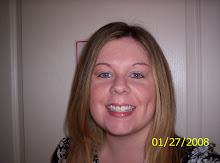2002 Caldecott Honor Book
Kerley, Barbara. (2001). The Dinosaurs of Waterhouse Hawkins. New York: Scholastic Press.
It my sound childish, but I actually chose this book based upon the uniquely designed cover that has no title on the front. It has a picture of a man with spiked white hair holding a statue of a dinosaur. There is a large dinosaur head located behind the man. By reading the title on the spin of the book, I figured it was something about dinosaurs but I had no clue what the words "Waterhouse Hawkins" would mean.
I thoroughly enjoyed this true story based upon an artist and lecturer named Benjamin Waterhouse Hawkins. The story begins in London in 1853. Waterhouse is reminiscent of his childhood love and passion for sketching, drawing, and painting animals. However, his ultimate fascination was in sculpting models from sketches he had made. In his adulthood, Waterhouse was working on a very exciting project, one in which involved building dinosaurs for display at the Crystal Palace belonging to Queen Victoria and Prince Albert. At this time in history dinosaur fossils had been discovered, but no one really knew what dinosaurs looked like. To figure out the mystery and art, Waterhouse worked closely with a scientist named Richard Owen. As Waterhouse sketched pictures of the dinosaurs based upon the fossils, Owen checked his work for accuracy of every muscle, bone, and spike placement.
The book also describes the process that Waterhouse followed while building full-scale creatures. Readers can read about the process and then look at the carefully labeled illustration of the six steps. The author also outlines the major successes throughout the life of Waterhouse. By 1868, Waterhouse was invited to build American dinosaurs for the Paleozoic Museum in Central Park and also to present dinosaurs at The Academy of Natural Sciences in Philadelphia. After dedicating two years of work in preparing the dinosaurs for the Paleozoic Museum, a terrible halt is brought to the project due to actions by William "Boss" Tweed. Then in May of 1871, Waterhouse faces another problem when some vandals broke into his workshop and destroyed his dinosaurs.
By the end of the story, Waterhouse decides to display American dinosaurs in another way. He goes to Princeton University and the Smithsonian Institution to paint a series of painting that showed he development of life on Earth. These paintings included his dinosaurs. At age 71, he returns back home to London.
I love how the book ends with a present-day representation of the dinosaurs created by Waterhouse. The author describes how people can still come to Crystal Palace Park and Central park to view the magnificent works built by Waterhouse.
I think students would love this book, especially boys! They can learn about the actual history of life-sized dinosaur models and the life of the famous artist responsible for creating them for the first time! This entire book was a learning experience for me! I have always loved learning about dinosaurs, but I have never learned about Waterhouse and his important achievements. This would be a great book to incorporate into a science lesson.
Saturday, April 10, 2010
Subscribe to:
Post Comments (Atom)

No comments:
Post a Comment